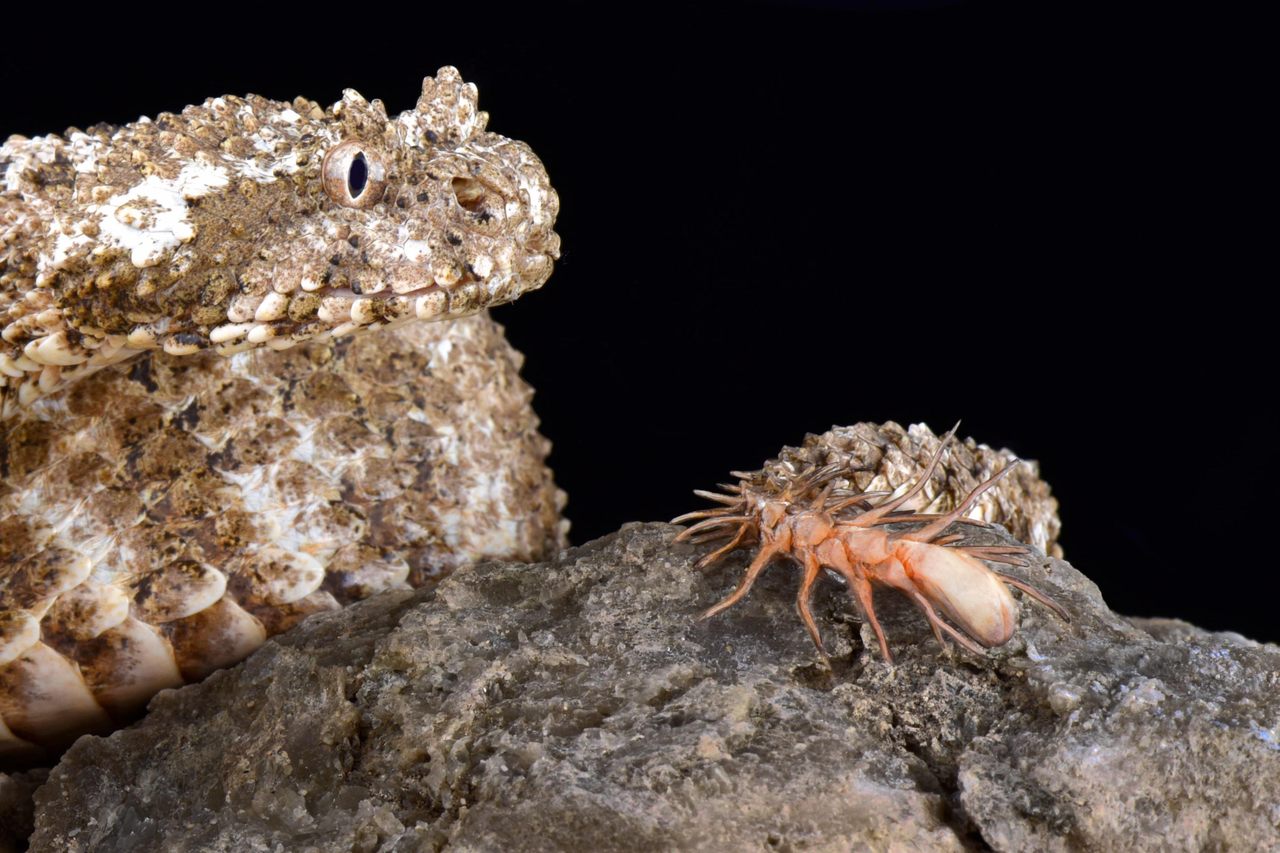The Impressive Trickery of Spider-Tailed Horned Vipers
It’s a spider! No, it’s a snake!
Each week, Atlas Obscura is providing a new short excerpt from our upcoming book, Wild Life: An Explorer’s Guide to the World’s Living Wonders (September 17, 2024).
Over the mountains near the western Iranian desert, a peckish migrating lark spots a welcome sight: a big, juicy spider, out in the open like a pie on a windowsill. The lark descends upon the naive arachnid, little claws outstretched. And then: WHAP.
The meal-seeker has become the meal, trapped in the jaws of an enormous snake. The lark’s would-be snack was not a real bug but an anatomical forgery: the incredible appendage of the spider-tailed horned viper.
Lots of predators use their own body parts to attract prey: Anglerfish grow their own glowing lures, horned toads wiggle their worm-like toes, and alligator snapping turtles make their tongues squirm.
But the bait used by the spider-tailed horned viper has a special panache. Millennia of evolution have sculpted the end of its tail into a near-perfect replica of a spider. For a while, this snake’s jewelry was difficult for even researchers to believe: A team examining specimens in 1970 thought at first that their snake had been preserved with a small spider clinging to her tail, or that she had a tumor or parasite.
But further encounters and careful observation have revealed the ornament’s development and use. Baby snakes are born with normal tails; as they grow, an abdomen-like knob develops at the tail’s end, while the nearby scales splay outward until they resemble legs. To hunt, a viper coils up on a limestone rock and twitches her tail slightly, sending the “spider” marching around on her well-camouflaged body until a bird or lizard falls for it.
The capture rate is not 100 percent. Researchers have seen wizened birds successfully resist the temptation of the twitching lure, as well as snakes whose spiders have lost limbs. But when it works, it’s one of the natural world’s freakiest and most impressive bait-and-switches—a snake in spider’s clothing.
Range: Western Iran
Species: Spider-tailed horned viper (Pseudocerastes urarachnoides)
How to see them: Look for a tempting spider—and then check to see if that spider is attached to anything.
Wild Life: An Explorer’s Guide to the World’s Living Wonders celebrates hundreds of surprising animals, plants, fungi, microbes, and more, as well as the people around the world who have dedicated their lives to understanding them. Pre-order your copy today!























Follow us on Twitter to get the latest on the world's hidden wonders.
Like us on Facebook to get the latest on the world's hidden wonders.
Follow us on Twitter Like us on Facebook